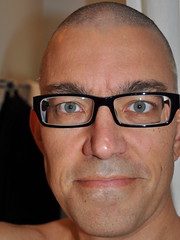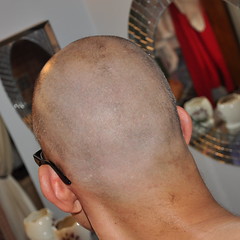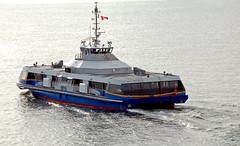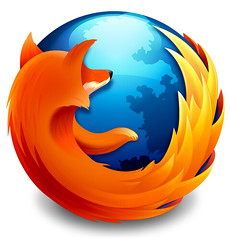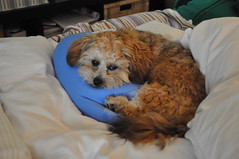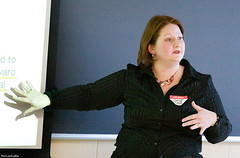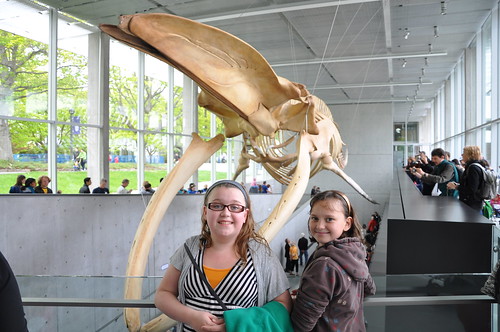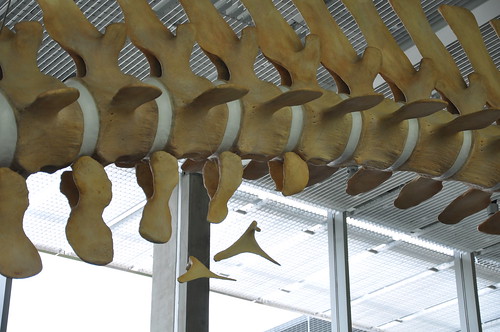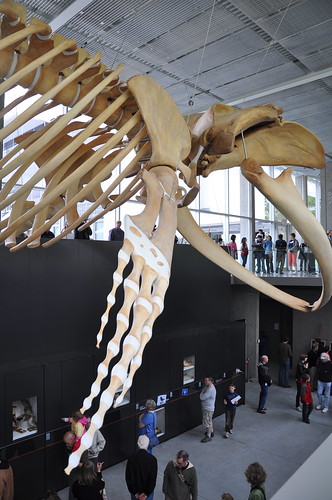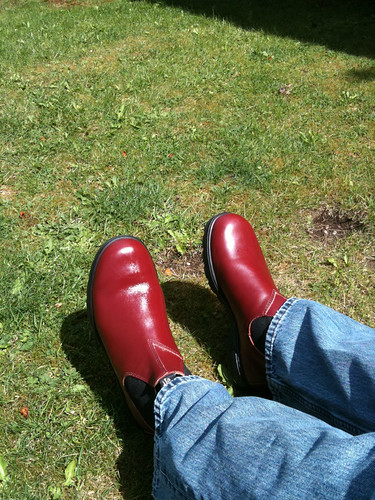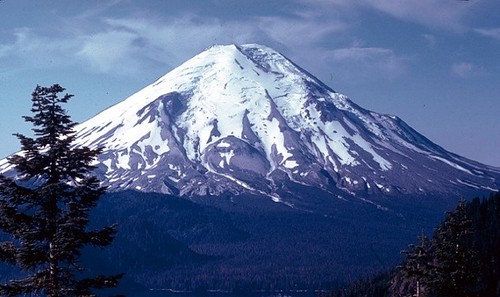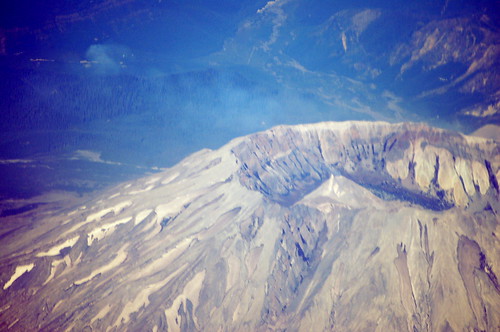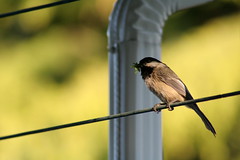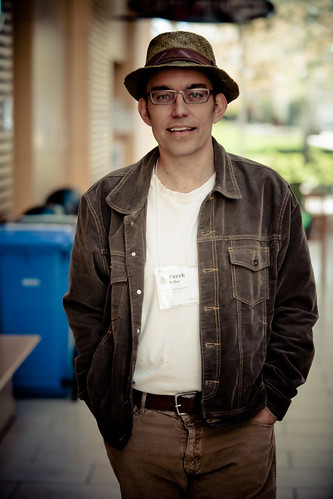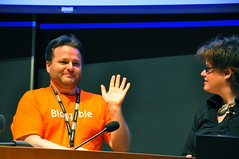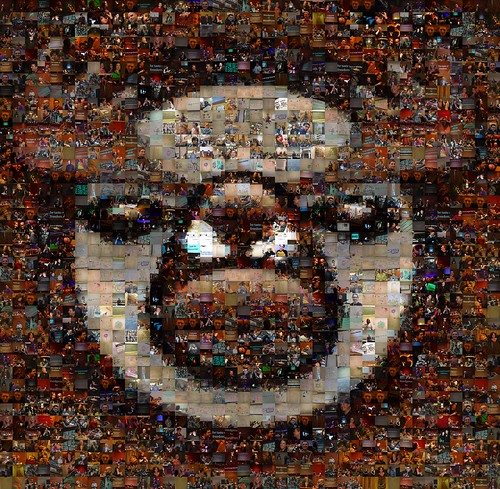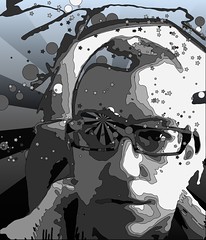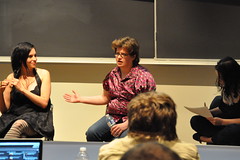 A bunch of sexy things came together this past weekend. You can parse that sentence however you wish, but I'll explain what I mean by it.
A bunch of sexy things came together this past weekend. You can parse that sentence however you wish, but I'll explain what I mean by it.
First of all, this year is the 50th anniversary of the availability of the birth control pill, and thus of the many revolutions it spawned. I didn't remember the anniversary at the time, but it turned out to be appropriate last Saturday, because perhaps the most thought-provoking panel during that day of the Northern Voice conference I've been blabbing about was "A Four Letter Word Called Sex," which featured Danielle Sipple, Steffani Cameron, and Monica Hamburg, with a special appearance by Kimli.
The panel got me thinking, and I posted this on Twitter:
I wonder whether recent backward moves in sex ed are simply the repressed old world convulsing as it dies.
Western society, and we in North America in particular, have long been conflicted and hypocritical about sex. That's only been amplified since the Pill, and in some ways things are more fraught than ever. Americans have both Dan Savage and purity balls. We Canadians have had nationwide legal same-sex marriages since 2005, yet a tiny Vancouver bookstore has been battling Canada Customs about importing gay books and magazines for over two decades, and we're still generally uncomfortable with transsexuality and prostitution. We're even confused about what sex is.
Privacy and sexuality
But I still think that the old repressed world is dying, even if—as with the rise of Tea Party–style reactionary approaches to sex education and civil rights in the U.S.—it's being especially loud, obnoxious, and ridiculous in the process. And the Internet has a lot to do with the change.
One of the links that appeared during the Northern Voice panel was a 2007 New York Magazine feature called "Say Everything: Kids, the Internet, and the End of Privacy." Unlike so many similar articles, it is not alarmist. Writer Emily Nussbaum is calm and level-headed, if a little bewildered—as many of her (and my) generation are—by her subjects. (Incidentally, I found out Nussbaum is married to geek celebrity writer and frequent Wired contributor Clive Thompson.)
Now, I'm far from a sex blogger—what little I've written about sex here has been pretty analytical and impersonal—but I've said before that, despite being 40, I seem to have the online privacy instincts of a 17-year-old. The New York article reinforces that idea: I find myself regularly siding with the subjects of the article who are half my age, rather than the worrying oldsters who actually are my age, perhaps because I'm among a small cohort in my generation that has been online since our early teens.
In that article, and elsewhere, it's obvious that sexuality and our choices about online privacy are often deeply intertwined. Naked pictures, sex tapes, frank discussions of sexual preferences, nasty gossip, bawdy party photos, amateur porn—all these are part of the fabric of life for many teenagers and young adults now. And I don't think it's necessarily a bad thing.
Telling the truth
People have always had sex (it's why we're still here, after all), and they've always started in their teens. But for too long, and for reasons rooted in outdated reproductive and societal structures and in antiquated religions, we in Western society—and to an even greater extent in some others—have taught kids that sex is dangerous, dirty, shameful, and to be hidden. And only for straight married people, of course, only to make babies. But that's all a lie.
Sex is part of who we are, and we ought to be honest with our kids that it can be—is supposed to be—healthy, fun, and nothing to be ashamed about. While it is private, sex is also something we should at least be a little open about at the right times. Most people will become sexually active in their teens, because they want to. They should learn how to be respectful, safe, and happy about it when they do. And, for the majority of us who get married eventually (and equally for those who don't), it's a good idea to have some sexual experience first. That's so we know what we like and what we don't, so we can figure out what we're doing, and so we know whether we're sexually compatible with our prospective spouses and partners. For humans, sex is not just about making babies—it's also recreational, and our very physiology confirms it.
The Internet helps bust the lie, but it's not enough on its own. As with medicine or climate science or any other field of knowledge, without some background and a skeptical approach, you can easily go astray and misinform yourself about sex on the Net. That's why we parents and educators need to be honest with our children too.
Making mistakes out there
I mentioned a couple of months ago that my daughters are starting to want to establish their identities online. Of course there are potential dangers with that, but let's not forget that there are dangers in everything: driving a car, taking a bath, making friends, going skiing, eating and drinking, having sex, having children, piloting a helicopter, buying a house—you know, life in general. The key is to learn to understand the risks and benefits, and to try to manage them.
Kids don't suddenly and magically figure that stuff out when they're 18, whether online, in a car, or in bed. Thinking otherwise is just silly, and evidence shows it doesn't work. As far as sex education is concerned, I'm firmly in the knowledge-is-power camp. And I think that those who prefer ignorance are just going to fall further behind, out of touch and out of relevance, at least in the West. At least I hope so.
That also means I fully expect that in the next few years, my kids are going to start posting stuff online I'm really not comfortable with—not to mention doing stuff I might not want to know much about. I hope that before then, my wife and I (and their school, and the other people they know and trust) can help them decide to do those things consciously and knowledgeably, knowing why they're doing them and what the results might be.
At that point, I'll want to know if my daughters are healthy and happy, and at least some of why that is. If there's something I'd rather not know about my kids' lives, at least in detail, then I'll probably have to decide not to read about it, rather than wishing they'd never done it or revealed it.
I'm not a utopian. My kids will make mistakes, as we all do. The way we all are online now, then maybe the mistakes will be public and embarrassing ones. What I hope, and want to help happen, is that my daughters will be both strong and confident enough to get through those mistakes, to learn from them and become better women.
That could sum up what the goal of being a parent is, in fact.

